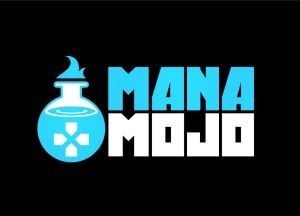 Welcome to the fortieth instalment of Who Review, my ongoing quest to review all available episodes of TV’s longest running SF series, Doctor Who. This week, the Doctor makes his first post-exile journey in Carnival of Monsters.
Welcome to the fortieth instalment of Who Review, my ongoing quest to review all available episodes of TV’s longest running SF series, Doctor Who. This week, the Doctor makes his first post-exile journey in Carnival of Monsters.
EPISODES
Carnival of Monsters
BROADCAST DATES
27 January – 17 February 1973 (4 episodes)
THE DOCTOR
Jon Pertwee
THE COMPANIONS
Jo Grant
THE EPISODES
With his exile to Earth finally lifted, the Doctor and Jo set off for the planet Metebelis III. They materialise, however, on the SS Bernice in 1928, a ship that mysteriously disappeared on the very date that they have arrived. Exploring, they find that the ship appears to be caught in some kind of time loop, its crew and passengers repeating the same actions, with no recollection of past encounters. Only the Doctor and Jo are unaffected.
Meanwhile, travelling showman Vorg and his assistant Shirna arrive on the planet Inter Minor, where they are greeted by a 3-man tribunal. Inter Minor is an isolationist world driven by logic and productivity. The planet’s President believes Inter Minor’s isolationism must come to an end and has laid down tentative steps in this regard.
Some oppose his plan, most notably Kalik, one of the tribunal members. Kalikand the Tribunal are wary of Vorg, believing he may be a spy for their perceived enemies. Vorg shows them a device he is travelling with, one he explains is for entertainment purposes. The Tribunal attempt to destroy the device with an Eradicator, a disintegration ray, but their efforts fail as the machine is protected by a field.
On the SS Bernice, the Doctor and Jo find a hatch that the passengers and crew cannot see, Opening it, they find that they are actually trapped within the circuitry of a fantastic but dangerous machine known as a Miniscope. The Miniscope keeps miniaturised groups of creatures in miniaturised versions of their natural environments, effectively leaving them prisoners without their realising it. Through the Doctor’s efforts at some time in the past, Miniscopes were banned by the Timelords, and were apparently all destroyed, although it is obvious that at least one has survived.
Seeking an exit from the device, The Doctor and Jo instead find themselves in another miniature environment, where they are attacked by vicious, mindless predators known as Drashigs. Escaping back into the circuitry, they are pursued by the creatures, who wreak havoc on the machine.
Outside the machine, Vorg finds the miniaturised TARDIS and removes it. Once removed from the Miniscopes field, the TARDIS returns to normal size, causing more suspicion amongst the Tribunal. Vorg shows them how the device works and how it serves as entertainment, but they have little grasp of the concept of entertainment and remain suspicious.
Seeing the destructive nature of the Drashig, Kalik hatches a plan to allow the creatures to escape, believing the destruction they cause at full size will unite the people against the President’s plan and restore the planet’s isolationist policies, with Kalik appointed as new leader once the President is forced to resign.
Meanwhile, The Doctor finds a way out into the real world and is restored to full size. He learns from Vorg that the machine is malfunctioning due to the damage caused by the Drashig, and that all of the prisoners within will soon die.
Linking the device to the TARDIS, the Doctor rigs a means of transporting back into the device to rescue Jo. His sudden disappearance shocks the Tribunal, leading one of its members to damage the rigging device, leaving the Doctor stranded within.
Through Kalik’s machinations, two of the Drashig escape, killing Kalik. Vorg manages to destroy the creatures with the Eradicator. He then quickly repairs the rigging device, enabling the Doctor and Jo to escape. Through the TARDIS link, the captives within the Miniscope are returned to their own time.
MY THOUGHTS
Carnival of Monsters is a simple but effective and entertaining story, a refreshing change of pace for the series after the previous season and the tenth anniversary episode. Despite the threat of the Drashig and the political machinations of Kalik, the story is relatively light-hearted and even comedic at times.
Originally, the storyline was titled Peepshow. Fortunately, the title was changed due to the obvious risqué connotations such a name implies. The title Carnival of Monsters was taken from a line Vorg uses in introducing his act.
Of particular interest to Who fans is the presence of two actors whose impact on the series would be felt later on: Ian Marter and Michael Wisher. Marter, who plays a crewman on the SS Bernice, would go on to greater fame as Harry Sullivan during the Tom Baker era. He would also write 9 Doctor Who novels that have been praised as some of the best adaptations of the series.
Michael Wisher would also return during the Baker era, portraying the villainous Davros. As Kalik in Carnival, you can hear hints of Davros in his voice.
It’s also interesting to note that the planet the Doctor is trying to reach at the beginning of the story is Metebelis III. He would eventually reach this planet without Jo in Planet of the Spiders.
Carnival of Monsters is by no means a masterpiece, and it doesn’t rank in the all-time greatest Who episodes, but it is a reminder that the series can be fun, light-hearted and wonderfully entertaining when it wants to be.
THE DOCTOR
We learn a few interesting tidbits of information about the Doctor in Carnival. At some point in the past, he lobbied successfully for the Time Lords to ban Miniscopes, suggesting that he had some influence amongst his race’s elders before leaving his home planet. We also learn that he learnt to box from famous 19th century boxer John L. Sullivan.
The most important development with the Doctor, however, is his relationship with Jo. There has always been a strong bond between the two – a reflection of the bond between actors Jon Pertwee and Katy Mannins – but the writers have now fully embraced the this relationship. It is the strongest the show has seen since the original Doctor and his granddaughter Susan and bears many similarities with that relationship.
THE COMPANIONS
Something very interesting has been happening with Jo since season 9, and it becomes apparent in Carnival of Monsters what that is: Jo is beginning to become more actively involved in proceedings. She’s questioning events more, challenging the Doctor with key questions at pivotal moments. She’s become more resourceful than ever, even showing off her escapology skills that were mentioned first in Terror of the Autons.
It seems as though the writers are actively seeking to improve her character, and the change is certainly welcome. Jo has grown immensely since her first appearance, but she’s really come into her own as a strong, resourceful companion in this current season.
THE VILLAINS
The Drashig are one of the more convincing puppets created for the series, mainly due to the use of actual dog skulls as heads for the creatures. This gives the creatures realistic fangs and jaws, adding effectively to their slimy, slug-like bodies. They are genuinely vicious looking monsters.
Kalik is not the most memorable of villains, but he is wonderfully portrayed by Michael Wisher. Wisher’s straight-faced portrayal, even when delivering the most ridiculous and humorous of lines, makes the character work. Like many a Who villain, he believes that what he is doing is the right course of action to protect his people, even if his methods are villainous. I’ve always enjoyed this approach to villains, even when applied to more comedic effect.
FINAL THOUGHTS
While not one of the all-time greats, Carnival of Monsters is thoroughly entertaining and, more importantly, just a lot of fun.
3.5 Lukes
NEXT
The Master returns with his most nefarious plot yet, and some unlikely allies, in Frontier in Space.









At the time, Carnival was always a popular story without ever vying for fave episode of this particular season. It had so many possibilities and avenues to go storyline wise that it’s hard to understand why they didn’t make it a six-part story (especially as the Ogrons are introduced on the miniscope but a storyline with them isn’t developed. There is no SS Bernice by the way (like many of us thought at the time but we were possibly misled by the fact they used a real historical ship i.e. the Marie Celeste, in The Chase). I agree with you about the Drashigs and it’s a shame the Doctor and Jo didn’t get to stay on that planet for awhile longer…interesting they put so much effort into a minor monster character and yet when it came to Invasion of the Dinosaurs well…ummmmmmmm…
Something I’ve noticed writing these reviews is that many of the four-part stories could have been expanded to six, while many six-parters could have been cut down. I’d love to have seen Curse of Peladon expanded, while The Mutants or The Time Monster really needed to be trimmed down.
There’s certainly scope in Carnival of Monsters for expansion, but the story still works well at four parts. At least it doesn’t overstay its welcome like the Time Monster.
It doesn’t surprise me that Carnival was a popular story. It’s incredibly entertaining. In another era, it might have stood out more, but given the run of good to excellent stories during the Pertwee era I can understand why it isn’t vying for favourite episode.